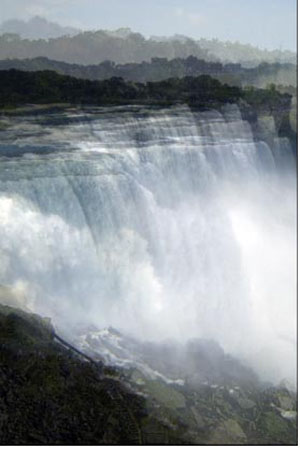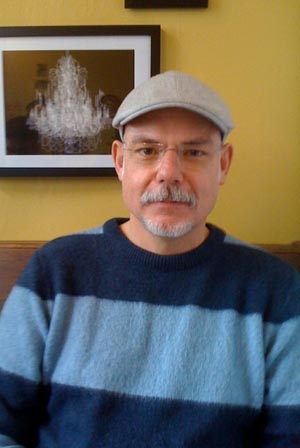The U.S. State Department has commissioned associate art professor Elliot Anderson to create a large-scale photographic work for a new embassy in Zambia, Africa.
The piece will be the central artwork for the embassy and will consist of a large diptych on lightboxes, with images of Niagara and Victoria Falls.
“It is similar to my Average Niagara work that is in the collection of San Francisco’s de Young Museum,” Anderson noted.
The work was commissioned by the State Department's Art in Embassies program, and the piece will have a prominent place in the entry atrium of the new US embassy in Lusaka, Zambia.
“A person associated with the State Department saw my solo exhibition Average Landscapes at the de Young in 2007,” said Anderson. “Originally, they contacted me about loaning a piece to them for an embassy in Burkina, West Africa, but on the advice of the de Young curator, I declined lending the piece.”
Recently, the Art in Embassies program contacted Anderson again--only this time they were willing to commission a work.
“They wanted a similar piece to the Niagara, but they wanted one image to be Victoria Falls, which is in Zambia,” Anderson said. “This was to illustrate a relationship between the natural wonders of both countries.”
The work will be installed there later this year. “Currently, they are looking for funds to send me there and arranging for me to work with students in Lusaka,” Anderson noted.
Anderson’s latest research has been focused on questions about what it means to be a landscape artist in the 21st century, and how an artist represents landscape with contemporary practices and tools.
He noted that environmentalism is an important aspect to incorporate in representing 21st Century landscapes.
One of his projects involves working with the Silicon Valley Toxics Coalition along with DANM grad student Phoenix Toews--developing augmented reality software that runs on iPhones and iPads.
Their work is titled Tour of the Monuments of Silicon Valley. A viewer will be able to run an application on a device and visit a particular Silicon Valley Superfund site--there are currently 29 in the valley.
“Their phone locates them at the site and as they look through the camera on the phone, audio about the history and condition of the site plays, and 3D graphics appear in certain locations,” said Anderson. “They can interact with the 3D objects and hear more sound or see other images. And they can follow virtual objects through the space to learn about certain spots on the site.”
Anderson said that goal of the project is to create an interactive, locative storytelling platform using the phone, sound, text, and interactive computer graphics. A prototype was exhibited this past summer at the 01SJ International Biennial of technology art in San Jose.
Anderson is also taking part in a residency at SF Camerawork Gallery titled "As Yet Untitled" with a collective called “Nonsite Collective.”
“It's a group of Bay Area writers and artists,” said Anderson. “The residency is also an exhibition--the public witnesses the work done during the residency as it develops.”
“The piece we're working on now is titled Common/Use--an exploration of the meaning of the commons in the 21st century,” said Anderson. “My segment is 'Common/Waste,' which examines how refuse, environmental contamination, and degradation are part of the commons.”




